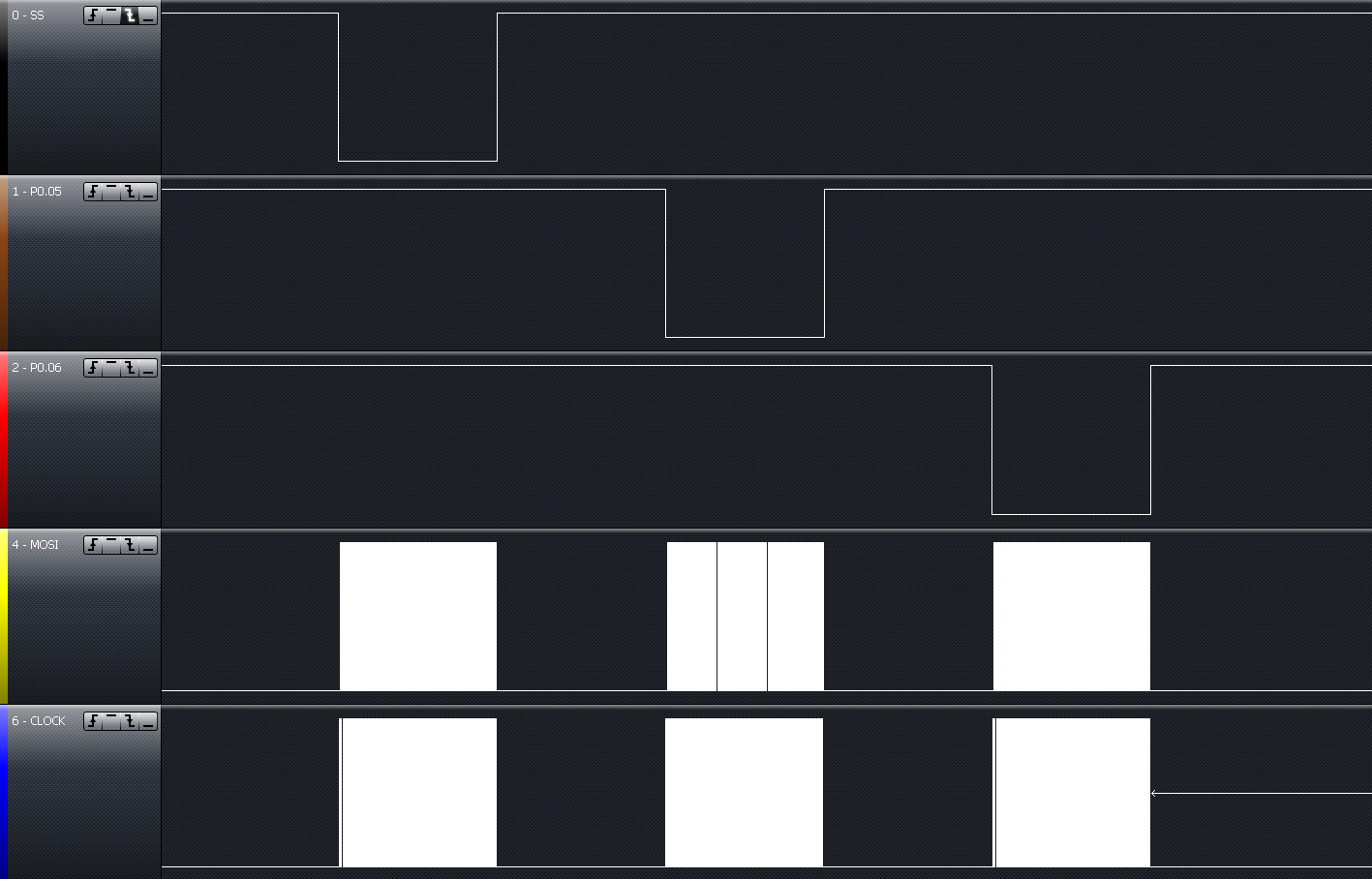As I understand the SPI HW driver documentation, it appears to be at least biased for using a single chip select (slave select in the API). I have an application where I have 5 devices on the SPI bus.
Should I create an SPI master configuration structure for each of the 5 devices? Only the SPI_Pin_SS would be different in each of them, and I think I would need to close and open SPI to switch between the devices.
Or can I use a single structure with spi configuration function to configure the SPI pins (CLK, MOSI, MISO) and manually configure the chip selects? And then when I want to change device I want, just change the SPI_Pin_SS?
Another way? After reading RK's answer, began to wonder if could use GPIOTE to handle the multiple chip selects. Would it work to assign SPI_Pin_SS to an "unused" pin, and cofigure GPIOTE task to toggle desired CS when SPI toggles _SS ? I haven't explored GPIOTE at all yet so this may be a naive idea.


